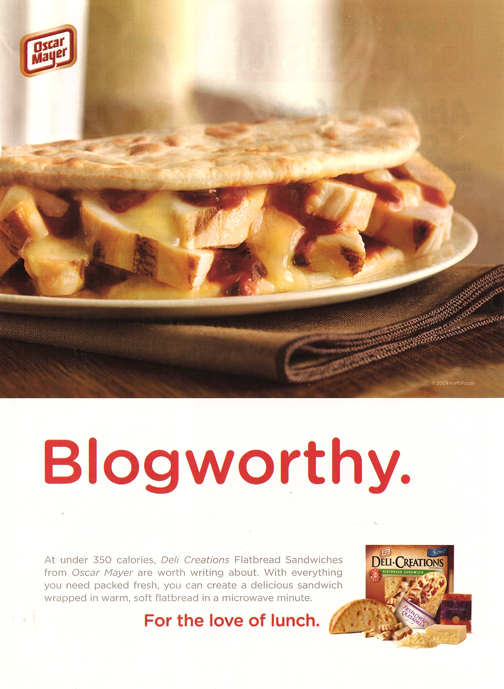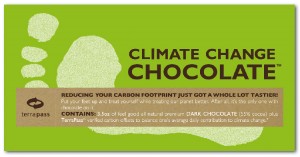[3/25 update: I’ve now got several contributors to the Unconsumption blog, but if you have strong ideas about what you’d like to contribute I’d still be happy to hear from you. Also stay tuned for news of the next phase of this project, coming soon. In the short term, check out the blog, and if you like it, tell your friends, or better yet hype it to a high-powered famous online personality or entity.]
So a few weeks back I announced the Unconsumption Tumblr blog, the latest iteration of my unconsumption interests.
Couple of updates and thoughts. First, at the time I read a blog reaction somewhere (I forget where) speculating that this was some kind of trial balloon or first step in researching a new book. Not so!
First, I have no intention of writing another book about consumer behavior, material culture, etc.*
Second, I see unconsumption as an extension of Buying In, not a potential sequel. I always wanted the “sell” on Buying In to be that it was a book that would “help you change the way you shop/consume,” by pulling back the curtain on contemporary murketing practice as well as workings of the consumer mind revealed by behavioral psychology. (Instead the “sell” ended up being more along the lines of “you are what you buy,” which to me didn’t really communicate the idea that reading the book could help you make better consumption decisions. But oh well.) In other words, the unconsumption concept flows directly out of my own conception of a book that I’ve already written.
And in any case, unconsumption is not a very book-y idea — it’s meant to be more open-ended. It’s not a definitive statement. See a few of the suggested notions of unconsumption on the Tumblr blog.
And — here’s the point — help us make it better.
As before, I am actively seeking collaborators on this project. I don’t want to own it, I just want to throw it out there. I want it to be a framework for a different way of thinking about the secret dialogue between what we buy and who we are.
The first step is getting more contributors to the unconsumption blog. I could particularly use some involvement from somebody who is a closer follower of sites like Worldchanging and Treehugger and similar sites that I don’t always have time to check out — to find the on-point items on such sites to add to the gallery of unconsumption thought and resources. Personally I think Tom and I are doing a reasonably interesting job of surveying & curating online unconsumption ideas, but your help might make it even better.
If you’re interested, let me know. I am inviting you, right now. Collaboration. Open-source. All that.
So: Email me at: murketing@robwalker.net.
The next step would be the creation of an unconsumption wiki, something Tom & I have discussed a bit. More on that later — though if you have an immediate reaction to that hint then, again, get in touch.
All of this is, for me, an exercise in trying to contribute something positive to the public discourse on consumer behavior — rather than simply making pronouncements, trend-pro-style. Trying to be proactive, not just reactive.
[* Not that I wouldn’t like to publish a Consumed collection, which is something a number of people have asked about. The present stumbling block to that would be, you know, convincing a publisher that somebody would buy it. Interested publishers are also invited to get in touch!]
So, as noted, I was at SXSW Interactive this weekend. Since getting back I’ve slowly been catching up on my reading. I’m struck by the tone of two recent columns, one by David Brooks, and the other by Peggy Noonan. Most notably, I’m struck by how different they are in tone from the general mood (as I was reading it, at least) at the Austin Convention Center.
First here’s some of Brooks:
There are no aspirational stories of rags-to-riches success floating around. There are no new how-to-get-rich enthusiasms. There are few magazine covers breathlessly telling readers that some new possibility — biotechnology, nanotechnology — is about to change everything. That part of American culture that stokes ambition and encourages risk has gone silent.
We are now in an astonishingly noncommercial moment. Risk is out of favor. The financial world is abashed. Enterprise is suspended. The public culture is dominated by one downbeat story after another as members of the educated class explore and enjoy the humiliation of the capitalist vulgarians.
Peggy Noonan’s column is even more downbeat than that — way more downbeat. It’s more like a J.G. Ballard story. Citing sources such as “a Wall Street titan,” “a Manhattan-based psychiatrist,” a “perceptive writer,” and “a friend in Florida,” she spins a portrait of the country in anxiety and fear and dystopia: Americans are apparently hoarding guns and gold coins, pulling money from the bank and preparing to grow their own food in the backyard.
Now I was only at SXSW a couple of days, but the last day it came up in one conversation that nobody seemed to be talking about the economy at all. The only panel it came up in was one that I was on (and was actually brought up by me — though I wasn’t making any points about end times being nigh). People were unveiling business ideas, lining up for movie openings, crowding panel talks to here more about what’s the next Twitter or how to be me more awesome, or whatever — and figuring where the next party was.
Maybe others had a different experience, but I truly felt like I was in some kind of recession-free zone. Certainly one didn’t sense that “enterprise is suspended” — let alone that we live in “a pandemic of fear,” as Noonan’s psychiatrist source puts it.
I should also mention that I traveled on full planes, through crowded airports. Yesterday Savannah’s St. Patrick’s Day hoedown was reportedly robust.
On the other hand … today, on On Point, callers angry about the AIG thing dropped references to “treason,” or simply declared, “I want blood.”
Oh. And the markets closed up again today.
So: What’s the deal? Are Brooks and Noonan out of touch? Are the SXSWers out of touch? Or is Hugo Lindgren correct that the anxiety is simply amplified in NYC (and perhaps by extension DC, where Brooks is based)? What about those incendiary NPR listeners? What about the markets?
Is it all just more proof that overgeneralizing is always a bad idea? More evidence/another variation on the idea that there are multiple Americas?

Hipster Runoff: “I recently saw an advertisement for some sort of taco/quesadilla made by Oscar Meyer that made me think it might be worth trying, even though it looks like it was assembled by a white mom from suburbia. The advertisement declared that it was blogworthy. I only enjoy blogworthy things.”
Posted Under:
Foolhunting
This post was written by Rob Walker on March 18, 2009
Comments Off on And I guess it is. In a way.
Everybody knows about advertising “clutter” — the proliferation of commercial persuasion messages through every conceivable medium. Consumers don’t like it for obvious reasons, but ad pros don’t like it easier: The more messages there are, the harder for theirs to get through, etc.
Consumer-in-control rhetoric aside, the evolutions of the media landscape have done nothing to reduce clutter. (Obviously this is dealt with in more detail in Buying In.) In fact the various technological advances described as empowering the consumer invariably inspire, or simply succumb to, more forms of marketing.
This is because, generally speaking, when commercial persuaders fight clutter, they way they do it is by creating more clutter. A recent Adweek piece is instructive on this score. It’s titled “The Clutter Busters.”
Stephen Quinn, CMO of Wal-Mart Stores U.S., says that the only clutter-proof medium he’s aware of is the one that the company created itself, the Walmart Smart Network….
When it’s fully rolled out next year, it will include some 27,000 in-store video screens in 2,700 stores. The content includes both infomercials and advertisements from Wal-Mart suppliers, and the schedules are customized to individual stores and shopping occasions.
Well, that’s a “clutter-proof medium” only in the sense that no unsanctioned brand can interfere with the messaging of Wal-Mart and its suppliers. From a consumer point of view the medium of an in-store shopping network, blasting infomercials and ads while you shop, is, in point of fact, an all-clutter medium.
And that’s what most of the examples in the piece seem to be: Media or content that is completely controlled by a single brand, thereby eliminating the “clutter” of other brands. (In Wal-Mart’s case, that also means a network of “select female bloggers” who will provide “tips” on Wal-Mart’s site, and its YouTube channel.)
Another way to distance a brand from traditional clutter is that increasingly popular murketing form: Inserting your brand directly in the entertainment, away from the (skippable) ads for other companies’ products. A new daytime talkshow, for instance, will have host Bonnie Hunt doing a beauty segment involving “Walgreens integrations.” Not just using Walgreens products but “actually shopping in our stores… with our beauty advisers,” a Walgreens exec explains.
That’s clutter-busting? Maybe to brand managers. But not to the rest of us.

Popgadget informs me of Climate Change Chocolate.
Apparently it “comes with” a carbon offset. And the wrapper includes “15 tips” about leading a greener life. Here’s the official site.
This product motivated me to install a poll plugin. This is my first use of it. So I don’t know if it works.
I would like to know what you think of this product.
[poll id=”2″]
Posted Under:
Poll
This post was written by Rob Walker on March 17, 2009
Comments (1)
I don’t know.
But Carl Wilson does, and posted something about his experience that I found really illuminating as a regular watcher of the show:
The show did a pre-interview with me by phone the day before and I almost wish that one could have been televised instead: The producer started by saying that she was going to ask me a bunch of serious questions, “which tomorrow will be turned into jokes — but answer them then the same way you answer me now,” and proceeded to ask some of the most intelligent, well-thought-out questions I’ve had from any interviewer…
Fascinating. The whole post is pretty interesting, actually.
But what’s really great is Carl’s book, Let’s Talk About Love: A Journey To The End of Taste.
Yes, Carl is a friend from the old days, but disregard any potential bias and just trust me.
Maybe more on SXSW later, but for the moment, this:
It’s Sunday at 5 pm and I’m sitting at the table at the SXSW “bookstore,” where I was signing books. After ten or fifteen minutes, the handful of (charming!) people who actually wanted me to sign a book, or who just wanted to say hello, have moved on.
I’m sharing the table with Christopher Schmitt, Cindy Li and Mark Tramme, authors of Professional CSS: Cascading Style Sheets for Web Design, and Markos Moulitsas Zuniga, of Daily Kos fame, who was signing Taking on the System: Rules for Radical Change in a Digital Era.
This is a lot of people at a small table, and we were pretty crammed in. There was actually a moment when it looked like the “bookstore” minders were going to have me stand, but I got a chair in the end.
Anyway, Markos’ signees had also moved on, so I chatted with him. Super-nice guy. The CSS book co-authors were also really nice.
So we’re all sitting there.
Then David Carson (who had been pointed out to me earlier) ambles over and picks up Buying In. (Carson is “perhaps the most influential graphic designer of the nineties,” per Wikipedia.)
He looks at it — front, back, flaps. He doesn’t look at me.
After about 45 seconds of examination, he puts the book down.
Then he walks away.
Oh well.
 FUNNY BUSINESS:
FUNNY BUSINESS:
Everybody’s laughing at this year’s infomercial fad — but the sales are no joke.
This week in Consumed, the Snuggie and the Slanket and their ilk: What’s driving their sales into the tens of millions of dollars?
The idea seems to be that if the product is goofy, it ought to be pitched in the most ridiculous manner imaginable. Don’t turn into camp; create camp. The upshot is something like the Pet Rock of the Depression 2.0 era.
Read the column in the March 10, 2009, issue of The New York Times Magazine, or here.
–> The recently revamped Consumed Facebook page, where it’s now easier to leave comments and suggestions, is here.
Consumed archive is here, and FAQ is here. The Times’ Consumed RSS feed is here. Consumed Facebook page
“Letters should be addressed to Letters to the Editor, Magazine, The New York Times, 620 Eighth Avenue, 6th Floor, New York, N.Y. 10018. The e-mail address is magazine@nytimes.com. All letters should include the writer’s name, address and daytime telephone number. We are unable to acknowledge or return unpublished letters. Letters may be edited for length and clarity.”
Posted Under:
Consumed
This post was written by Rob Walker on March 15, 2009
Comments Off on In The New York Times Magazine: Blankets with sleeves
I didn’t think this would be necessary, but I am in receipt of a fresh email asking if I’ll be at SXSW this year. I thought I’d banged on about this enough, but, yes, yes I am.
Sunday at 5 pm I’ll be at the South By Bookstore until 5:30, signing books. And patiently waiting for you, yes, you, to sidle up and say hello.
The South by Bookstore is located on the Trade Show Floor. Enter the Austin Convention Center (on 4th Street across from the Hilton), take the escalators up to the fourth floor, take a right when you get off the escalator and walk down the hall. The main entrance to the trade show is on your left. Walk to the back, right side of the room. The bookstore is along the back wall. There will be signs identifying it.
I’ll also be a panel earlier that day: “We Have Been Objectified: Identity, Consumerism, and the Future of Designed Objects.” That’s in connection with the documentary Objectified which premieres at SXSW tonight. Read what Core77 has to say about that film here — no, here. (The original Core77 post was taken down, but it’s back now.)
Now you know.
Posted Under:
rw
This post was written by Rob Walker on March 14, 2009
Comments (0)

I’m out today. But please enjoy this delightful package design, via The Dieline.
I wish this bit in The Economist had been longer. It’s about excavating waste for information about how we consume.
A research programme at the University of Arizona conducted several studies comparing the participants’ own assessments of their habits with the record provided by their rubbish. It turned out that people wasted much more food than they realised, claimed to cook from scratch more often than they really did and ate more junk food and less virtuous stuff than they admitted.
A survey involving red meant consumption found:
Rich households, perhaps wanting to be seen to be eating healthily, claimed to consume less of it than they did, whereas poor ones, possibly indulging in wishful thinking, claimed to eat more.
Another interesting finding:
A well-publicised shortage of a particular product actually causes people to throw more of it away, perhaps because they have bought too much of it.
Great stuff. I read so much “data” about consumer behavior that is really nothing than polls. People can lie to pollsters — or, more to the point, lie to themselves. The upshot is rubbish. Maybe studying actual rubbish is a better idea.
In reading various articles about the alarming increase in the power and violence of the big Mexican drug cartels, I’ve noticed that while it’s always explained that said cartels have used their escalating profits in recent years to stock up on a dizzying array of weapons (often bought in the U.S. etc.)
What I haven’t seen is how their profits are holding up over the past six months or so. Is the downturn affecting demand for illegal drugs? One way or the other the answer would be interesting. Has that been written about and I just missed it?
After yesterday’s barrage of posts, I’ll leave you alone today, or rather direct you elsewhere.
1. Steven Heller has an interesting post about design “empathy,” an idea with its own logo. He also has some questions if you know much about that subject: “What I want to know is, when did empathy become first, a strategy, and second, a brand? Can you shed some empathetic (or sympathetic) light on the subject?”
2.Paola Antonelli is now writing a column for Seed.
3. Update on the 2/12/19 Consumed about the Fail Whale: ” To attract more followers to Baltimore tourism’s Twitter account, the guy who runs it, Tom Rowe, pledged that a friend of his would get a tattoo of Twitter’s iconic fail whale, and broadcast the tattooing on live webcam, if they could get past the 3,000 followers mark.” Adfreak has the picture.




 "
"



 FUNNY BUSINESS:
FUNNY BUSINESS:













 Kim Fellner's book
Kim Fellner's book  A
A